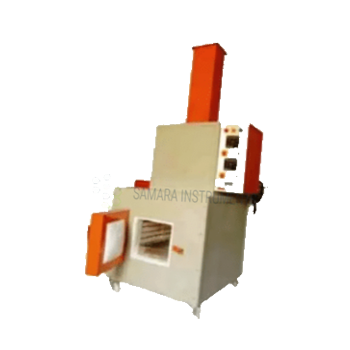


Hospital incinerators play a crucial role in the disposal of hospital or medical wastes including infectious, non-infectious (Red materials), and others. Read more
Hospital incinerators play a crucial role in the disposal of hospital or medical wastes including infectious, non-infectious (Red materials), and others. To dispose of various kinds of medical waste, mainly three types of incinerators are popular which are controlled air, rotary kiln, and excess air. But, the first type is mostly utilized. Medical organizations use incinerators to dispose of infectious, non-infectious, and all other types of garbage to ensure cleanliness and patient safety.
Working procedure of hospital incinerator?
Hospital incinerators mainly work in the two-stage process, where the first stage is starved-air combustion and the second stage is ash production. In this double-chambered incinerator machine, all the waste materials are put in the combustion chamber. Here waste materials are combusted completely and then transferred to the lower chamber. In this place, waste materials are converted to ash. In this way, hospital incinerators help medical organizations to dispose of their waste materials without harming the environment. Incinerators are made of heat-sensitive materials to complete the combustion process. So, the machine can easily withstand heat and corrosive materials.
Utilization of hospital incinerators:
With these hospital incinerators, air purity is maintained with public health.
What are the safety measures required for hospital incinerators?
Features of hospital incinerators:
Conclusion:
Hospital incinerators play a vital role in disposing of medical waste materials for public health. Controlled combustion helps in the measured air quality maintenance and destroys all the pathogens which are infectious or unhealthy for our community. These hospital incinerators are a great innovation of science where waste materials are combusted or turned into ashes without harming the environment. But, it’s highly required to maintain the safety protocols and all the guidelines to ensure the best results.
| Specification | ||||
|---|---|---|---|---|
| Principle | Waste Incineration | |||
| Waste Treatment | Medical Waste Incineration Treatment | |||
| Burn Rate | Per hour | |||
| Control Mode | PID controller | |||
| Smoke Filter Chamber | Yes | |||
| Feed Mode | Manual | |||
| Voltage | 220 V/ 3 phase | |||
| Temperature Monitor | Digital Display | |||
| Temperature Protection | Yes | |||
| Chimney | 5 Feet inclusive | |||
| Chimney Type | Stainless Steel/ Mild steel | |||
| 1st. chamber temperature | 800°C~1100°C | |||
| 2nd. Chamber temperature | 900°C~1200°C | |||
| Residency Time | 2.0 Sec. | |||
| Model No | Capacity | |||
| SI - IN/3 | 3 Kg | |||
| SI - IN/5 | 5 Kg | |||
| SI - IN/10 | 10 Kg | |||
| SI - IN/25 | 25 Kg | |||
| SI - IN/50 | 50 Kg | |||
| SI - IN/100 | 100 Kg | |||
| SI - IN/200 | 200 Kg | |||
| SI - IN/300 | 300 Kg | |||
| SI - IN/500 | 500 Kg |
